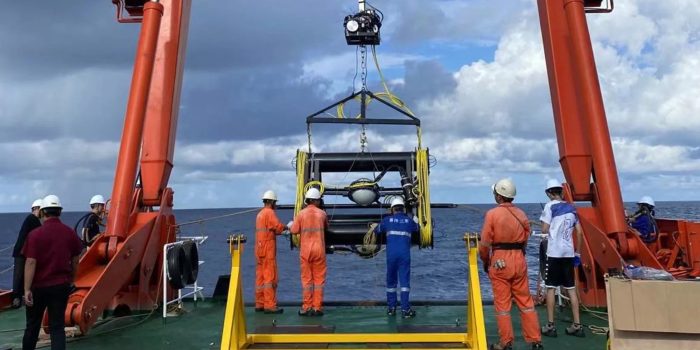In a groundbreaking venture, Chinese scientists are embarking on the construction of the Tropical Deep-sea Neutrino Telescope, fondly known as Trident, deep within the South China Sea. Their mission is to unlock the age-old mystery surrounding the origins of cosmic rays and venture into the uncharted territories of the universe. When it’s all said and done in 2030, Trident will proudly stand as the largest and most advanced neutrino telescope on our planet.

Trident’s chosen location is an oceanic wonder – it’s anchored on the seabed a staggering 3.5 kilometers beneath the waters of the Western Pacific Ocean, a considerable 540 kilometers to the south of Hong Kong. Its strategic placement, near the equator, grants it the unique ability to capture neutrinos from all corners of the universe as our Earth gracefully twirls on its axis, ensuring that there are no blind spots in its observation.

“Using Earth as a shield, Trident will detect neutrinos penetrating from the opposite side of the planet,” said Xu Donglian of Shanghai Jiao Tong University, the project’s chief scientist and spokeswoman, at a news conference on Tuesday.
“As Trident is near the equator, it can receive neutrinos coming from all directions with the rotation of the Earth, enabling all-sky observation without any blind spot.”
This telescope is more than just a cosmic ray detective; it has grand ambitions. Trident will not only delve into the origins of cosmic rays. Still, it will also serve as an experimental platform for testing space-time symmetries, probing the mysteries of quantum gravity, and even conducting an indirect hunt for the elusive dark matter.
Cosmic rays, the mysterious messengers from the cosmos, are primarily composed of charged protons. These particles, while fascinating, have a tendency to be misled by magnetic fields as they race through space at nearly the speed of light. This quirk makes it nearly impossible to trace their origin. However, neutrinos are buried within the cosmic rays, remarkable subatomic particles that remain electrically neutral. These elusive neutrinos can traverse interstellar distances without flinching, which makes them perfect tools for unveiling the cosmic radiation’s source.
To catch these elusive travelers, scientists have utilized specialized neutrino telescopes stationed in various parts of the world, like the South Pole, the Mediterranean Sea, and Russia’s Lake Baikal. In 2019, the Trident team pinpointed the perfect spot for China’s neutrino observatory – an area in the South China Sea characterized by a flat seabed and gentle ocean currents.
Trident’s design comprises an astonishing 1,200 vertical strings of sensors, artfully laid out on the seabed in a pattern known as Penrose tiling distribution. Each of these 700-meter-long strings houses 20 high-resolution digital optical modules, meticulously designed to capture and measure the light produced when neutrinos collide with water molecules. This data, including the number and timing of incoming neutrinos, promises to offer profound insights into the enigmatic origins of these cosmic particles.
The initial phase of this monumental project is slated for completion by 2026, with support coming from the Ministry of Science and Technology, the Shanghai municipal government, and Shanghai Jiao Tong University. This phase will encompass a more modest array with 10 sensor strings, primarily focused on testing the pivotal technologies required for the full-fledged telescope.
Trident isn’t just a scientific endeavor; it’s a promise of answers to some of the most profound questions about our universe. Its equatorial location guarantees a comprehensive view of cosmic neutrinos, and its cutting-edge technology is set to make it the reigning champion of neutrino telescopes worldwide by the time it’s unveiled in 2030.


